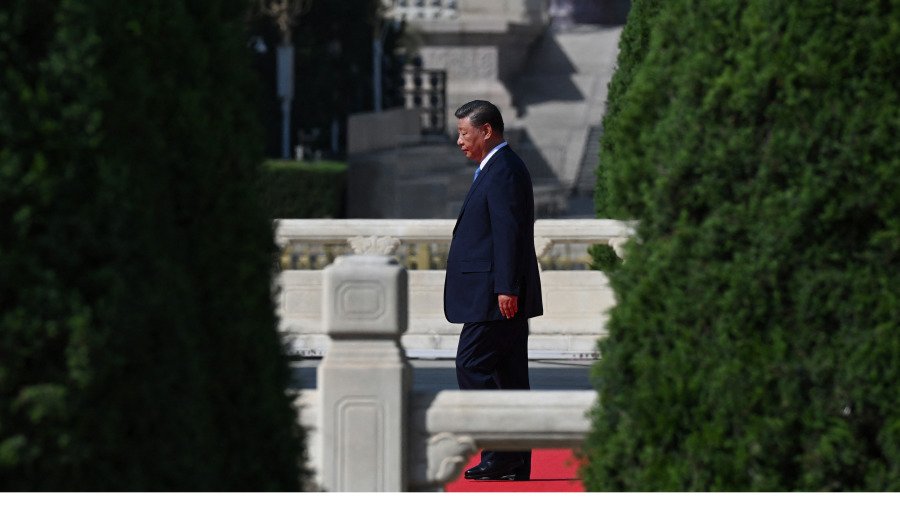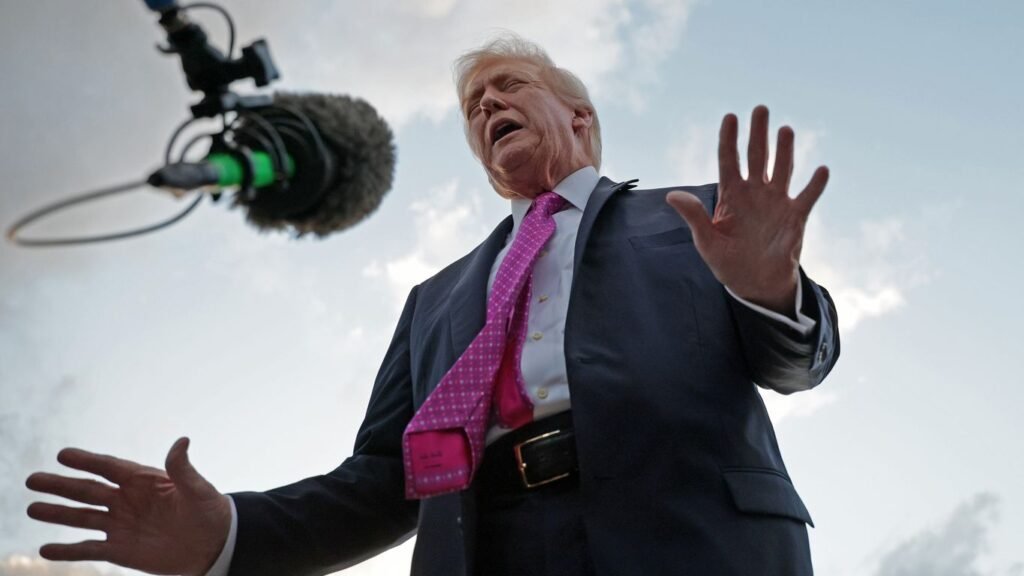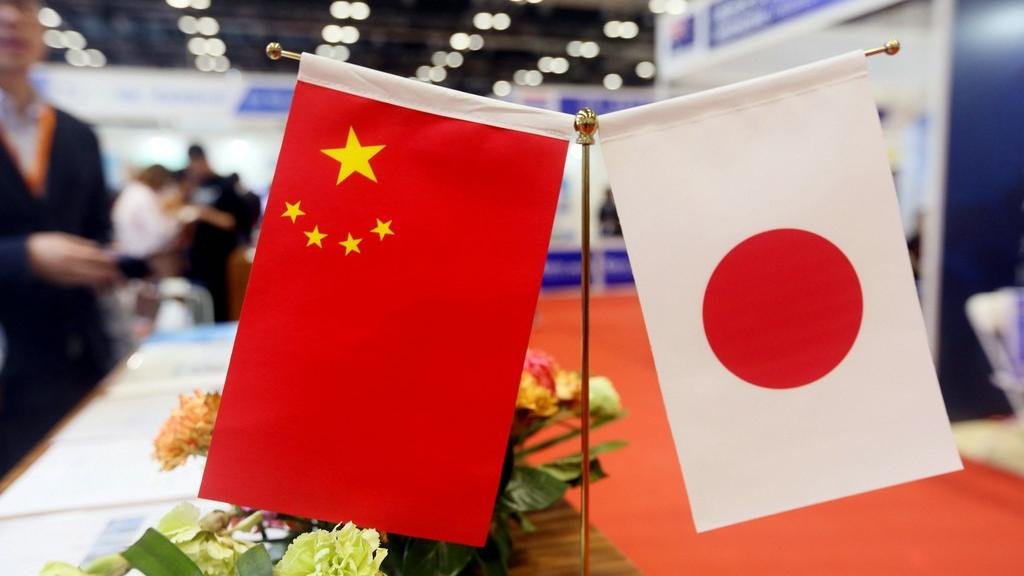As a mother of two, Paige Harris has noticed a change in the way she shops for her family.
“Items that I have bought regularly have gone up in price steadily,” she said. “From hair dye to baby formula, our grocery list has gotten smaller while our budget has had to increase. Meats like steak are a no-go for our household.”
Harris, 38, lives and works as a teacher’s assistant in Stella, North Carolina, and is one of almost 40 people who spoke to the Guardian about how they’ve been coping with the price of goods in the six months since Donald Trump announced his sweeping tariffs.
On Thursday, a study from S&P Global revealed that companies were expected to pay at least $1.2tn more in 2025 expenses than was previously anticipated. But the burden, according to the researchers, is now shifting to US consumers. They calculated that two-thirds of the “expense shock”, more than $900bn, will be absorbed by Americans. Last month, the Yale Budget Lab estimated tariffs would cost households almost $2,400 more a year.
Harris says the tariffs’ impact on her daily life contradicts promises from the Trump administration to “cut prices and make living affordable for everyone”. She said: “You see prices soaring. It has become very clear that this administration did not and does not care about the everyday lives of Americans.”
Several Americans told the Guardian their weekly budgets had been drastically altered with the introduction of Trump’s tariffs.
“Prices are way too high. I mostly shop at Costco and buy as little as possible anywhere else,” said Jean Meadows, a 74-year-old retiree who lives in Huntsville, Alabama. “I can’t imagine that stores haven’t noticed the change. I think people are really afraid of what is coming.”
That sense of apprehension is reflected in a recent poll, exclusively conducted for the Guardian, where respondents identified the tariffs as the second biggest threat to the economy.
“The bread I buy has doubled in price within a year. We live on a fixed income that doesn’t keep up with inflation,” said Myron Peeler, who is also retired and is the sole caregiver for his wife, who suffers from debilitating arthritis. The only saving grace, he said, is that his house and car are paid off.
Trump shows few signs of backing away from his tariff policy – a move the White House maintains will reinvigorate American manufacturing and increased revenue from trade partners.
Most recently, the president reignited a trade war with China by threatening a 100% tariff on Beijing as soon as November. This came after China moved to restrict exports of rare earth minerals needed for several everyday items from electric vehicle batteries to hospital equipment, a decision that Trump branded as “very hostile”. In an interview with Fox News, the president has admitted that the proposed tariff hike was “not sustainable”, but said he was left with little choice: “They forced me to do that”.
Currently, the average US tariffs on Chinese exports hovers around 58%, according to the Peterson Institute for Economics. It’s a levy that is already taking a toll on Americans such as Michele, from north-eastern Pennsylvania.
“We need to buy new tires for a car, and can’t, because affordable tires are no longer in stock and we can’t afford $250 a tire,” she said.
Several people echoed Michele’s feelings about availability, describing the situation as “empty shelves, higher prices”. Natalie, who lives in New Hampshire, said she hasn’t seen certain pantry staples “for months”. She said: “The store shelves have become more and more bare … instead of multiple choices there may only be one or two, and name brands are being replaced by store brands.”
At 55, Natalie is semi-retired but is due to start part-time work at a supermarket, and she has seen a price rise in nearly everything she buys regularly. “Any brand of cat food has increased anywhere from 25% to double the price. One wet food my cats like went from $1.79 to $2.49 per can,” she said.
The new normal many Americans are bracing for, or already feeling, is not just the cost of groceries, for those such as Minnie, a food writer in Portland, Oregon, it’s a change in lifestyle.
“I don’t shop for non-essentials. No fall shopping trips for a new sweater or jeans. And we’ll make all our Christmas presents this year,” said Minnie, 55. “We used to dine out once a week. Now we never eat out. Even fast-casual is insanely pricey. Everything is twice what it used to cost and we’re very afraid of what’s next, financially speaking.”
While the US inflation rate hovers around 2.9% – a substantial drop from the spikes of the Covid era – the tariffs haven’t helped ease the impact on Americans’ wallets. Richard Ulmer, 81, who has lived in Florida for 35 years, said this year has been “the worst from a financial standpoint”, adding that “everything” from his groceries to the electric bill has become more expensive.
For Cassie, a 25-year-old consultant based in Siler City, North Carolina, costs have shot up quickly compared to the “gradual price increases” during the first two years of the pandemic. Cassie has a strict $65 per week budget for groceries, but since Trump first announced his tariffs, she’s been priced out of her normal routine, which included doing most of her weekly shopping at Walmart.
“Now I must visit at least four different stores in the area and other towns, often driving longer distances to find the best prices,” she said. “During the summer months and the Mexico/Latin America tariff announcement, Walmart and other stores in the area ran out of bananas for around two weeks. No one could get bananas in my area.”







